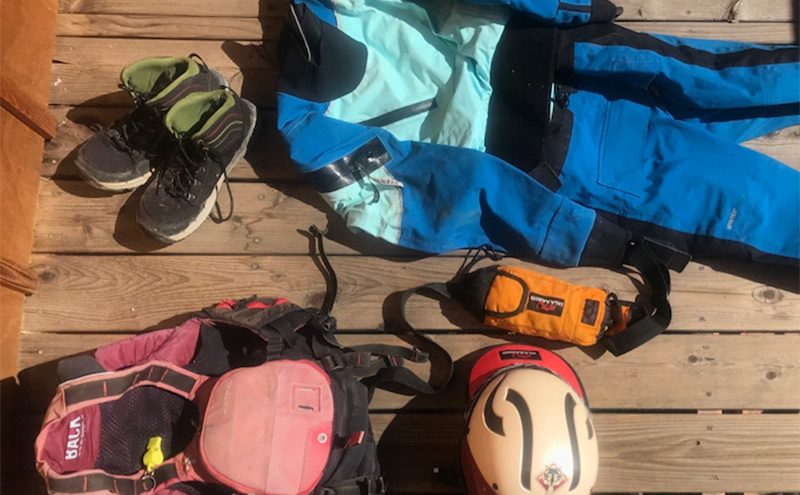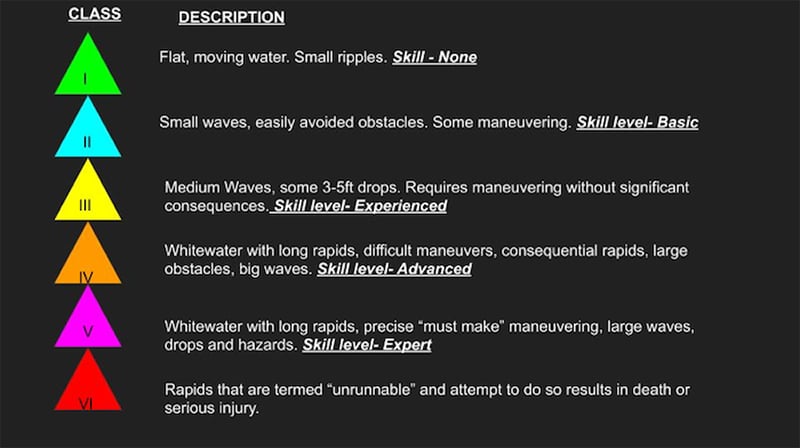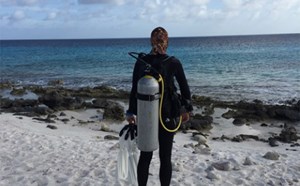
Swiftwater Rescue: A Basic Introduction
As a wilderness medicine enthusiast, part of the excitement comes from having a broader knowledge base that includes recreational sports, wilderness settings and a subset of skills that goes above and beyond the standard medical training. Swiftwater rescue requires further training, skills, gear and a healthy dose of respect for a powerful force of nature. This article does not serve to replace the need for a swiftwater rescue course, or be all encompassing in its descriptions. However, I hope it will help you gain a few basic concepts, terms and resources that can pique your interest into an extremely challenging wilderness medicine skill set.
Furthermore, after reading this you may better understand an EMS provider’s swiftwater rescue tactics, a patient’s description of a whitewater accident or best-case scenario help you prepare for landing that coveted spot on your friend’s Grand Canyon trip.
Basic Terms
River Right
Refers to the right side of the river as you look downstream.
River Left
Refers to the left side of the river as you look downstream.
Eddy
The “slackwater” or upstream current created behind an object like a rock or sharp river bend. Often a place to rest, scout or stop the downstream momentum of a craft or person.
Hole
As current goes over an object this causes the current to crash back on itself upstream and can flip boats, hold or recirculate buoyant objects.
Strainer
Objects or debris that allow water but not solid objects to pass through it. Common example is a log. Pose serious threat to swimmers or boats moving down stream (think pasta strainer).
Sieve
This term refers to boulders/rocks that allow water but not solid objects to pass through it.
Low Head Dam
Man-made feature usually spanning across entire river built to hold water and creates extreme hazard due to the uniform recirculation of the water back upstream as it goes over dam.
P.F.D.
Personal Floatation Device (commonly referred to as lifejacket- however caution as these devices alone will not save your life).
Flush Drowning
Death without underwater entrapment or significant trauma, most commonly associated with longer swims, high flows or coldwater conditions and may be contributed to cold water immersion syndrome1.
Pinned
Boat or person wedged against a rock in the river and unable to move.
Broached
A term used to describe both the bow and stern of a boat stuck between two rocks and unable to move.
Foot Entrapment
Foot stuck in a crack, crevice, or undercut and pinned there. Current can push person down causing drowning. This can often happen when attempting to stand in moving current. A good rule of thumb is to not stand in water that is deeper than your shins. Alternatively, think about the depth that your arms could to push your face out of the water should you be forced face first down by current.2.
Whitewater Rapid Classification
Rapids are classified loosely as below. Beware there are regional and even person-to-person variations of how rapids are classified. There is no single regulatory agency denoting how each rapid is labeled.

Basic Gear
- Throw bag
- Type V rescue PFD
- Helmet
- Wet suit or Dry Suit
- Proper River Shoes
- Knife
- Whistle
Basic Swiftwater Rescue Principles
First and foremost, ensure you have the proper training and equipment.
When rescuing “REACH, THROW, ROW, GO” 3:
- first reach (arm, leg, paddle, branch)
- use throw bag, throw victim flotation device
- if have appropriate craft you can row
- lastly, you can place a rescuer on a quick release rope system to swim out to victim (this requires advanced maneuvers and a team approach with appropriate gear). Do not attempt without training or alone.
Rivers, especially big rapids are extremely loud. Before beginning any recreational or rescue mission it is critical to establish hand signals with your team as there can be regional/group differences.
Know your back up plan as currents and rescue situations are often dynamic.
Swiftwater Rescue Courses
Already have the basics down, but thinking that you wish you could take a swiftwater rescue course? Here are some websites to learn more:
Hope to see you out on the water soon!
References
- David J. Farstad, Julie A. Dunn, Cold Water Immersion Syndrome and Whitewater Recreation Fatalities, Wilderness & Environmental Medicine, Volume 30, Issue 3, 2019, Pages 321-327, ISSN 1080-6032
- Bechdel, Les and Slim Ray. River Rescue, 4th Edition- A manual for whitewater safety.. CFS Press, Asheville, NC. 2009
- Segerstrom, Jim. Mike Croslin and Barry Edwards. Swiftwater Rescue Technician I.. Rescue 3, Inc. Elk Grove, CA. 1997
Claudia Temmer, MD, MBA
PGY-2 Denver Health Emergency Medicine Residency
ACA Swiftwater Rescue Certified
ACA Level IV Whitewater Kayaker Instructor



